Head of a deity (Isis?)
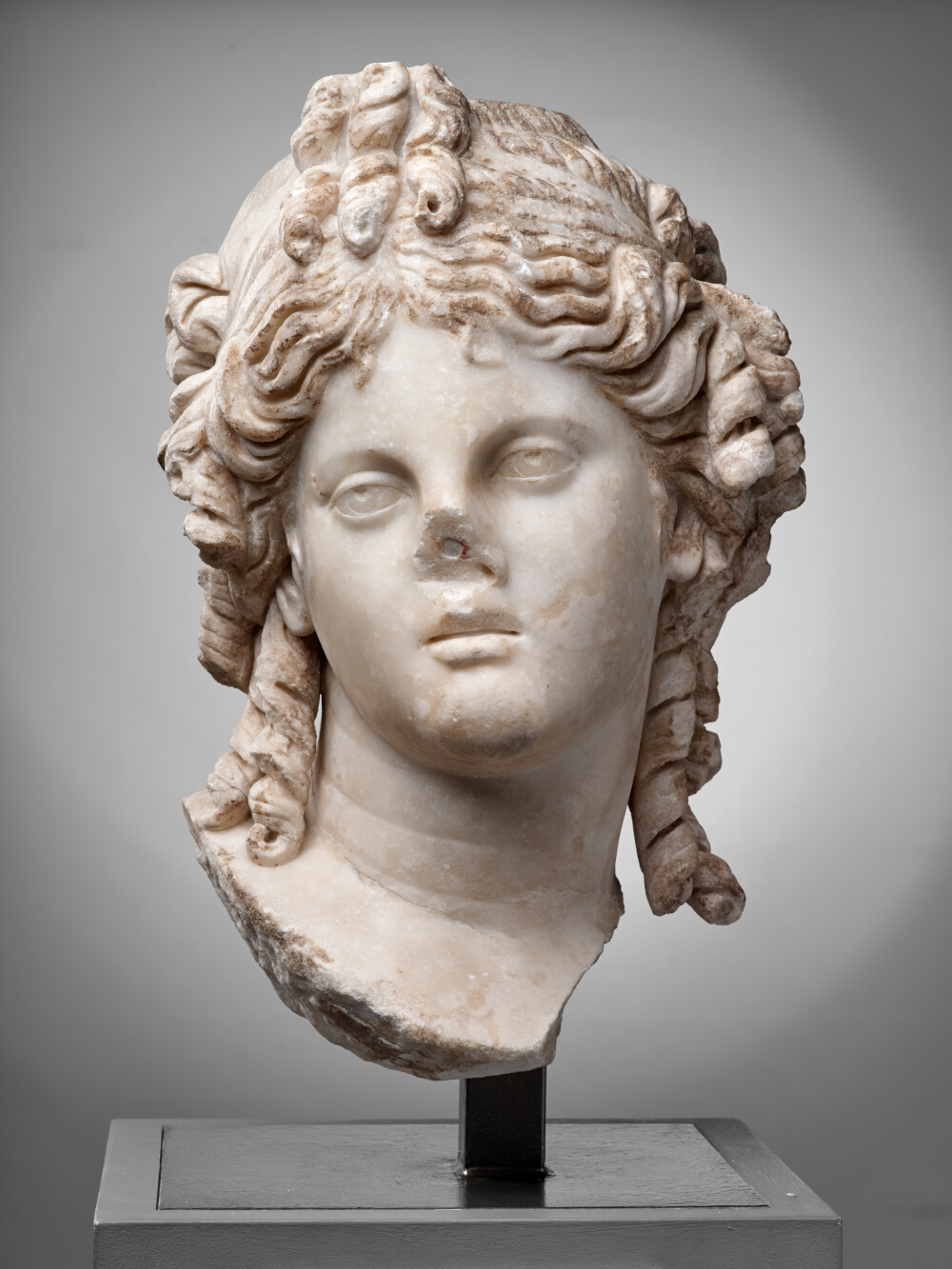
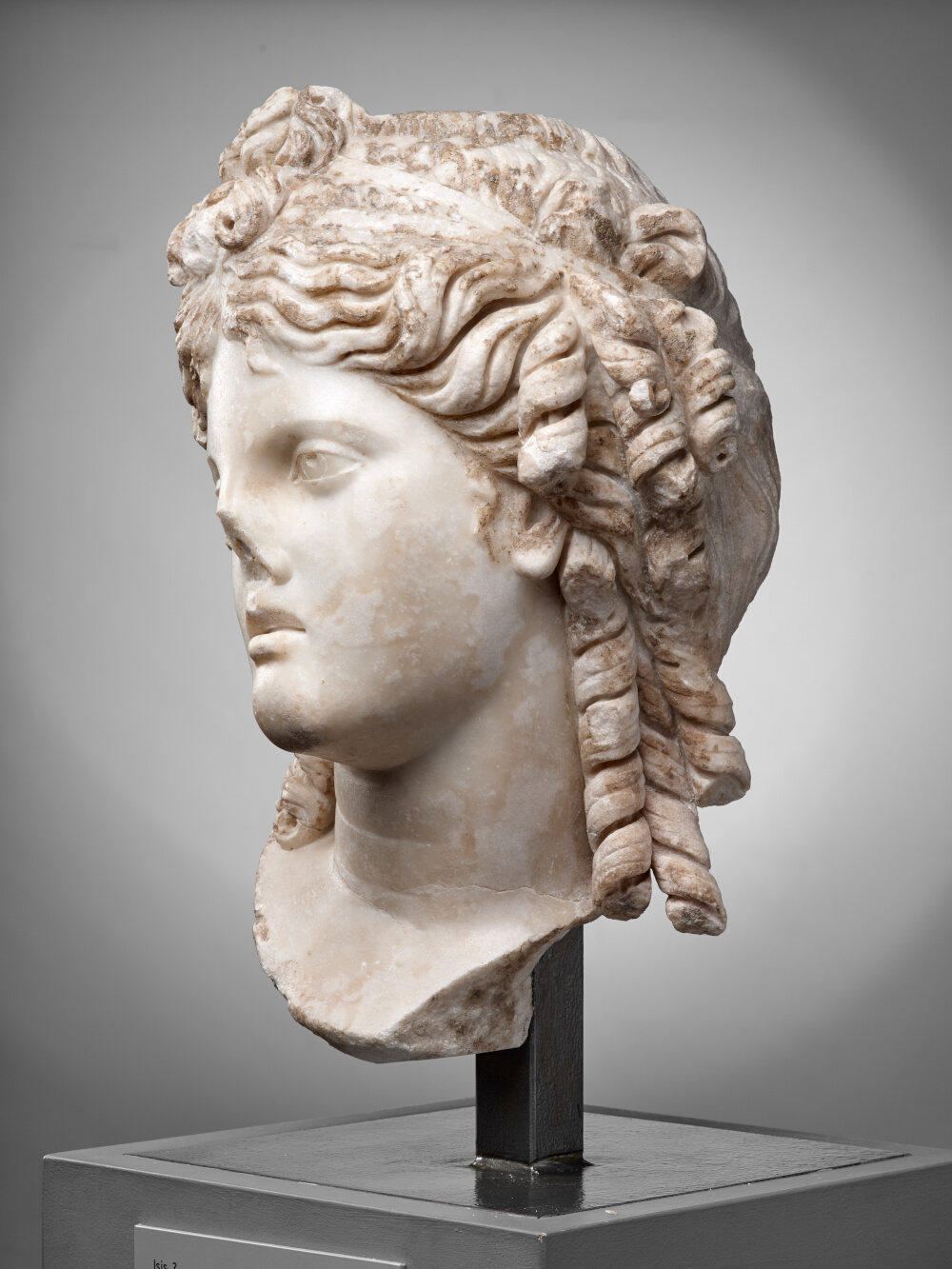
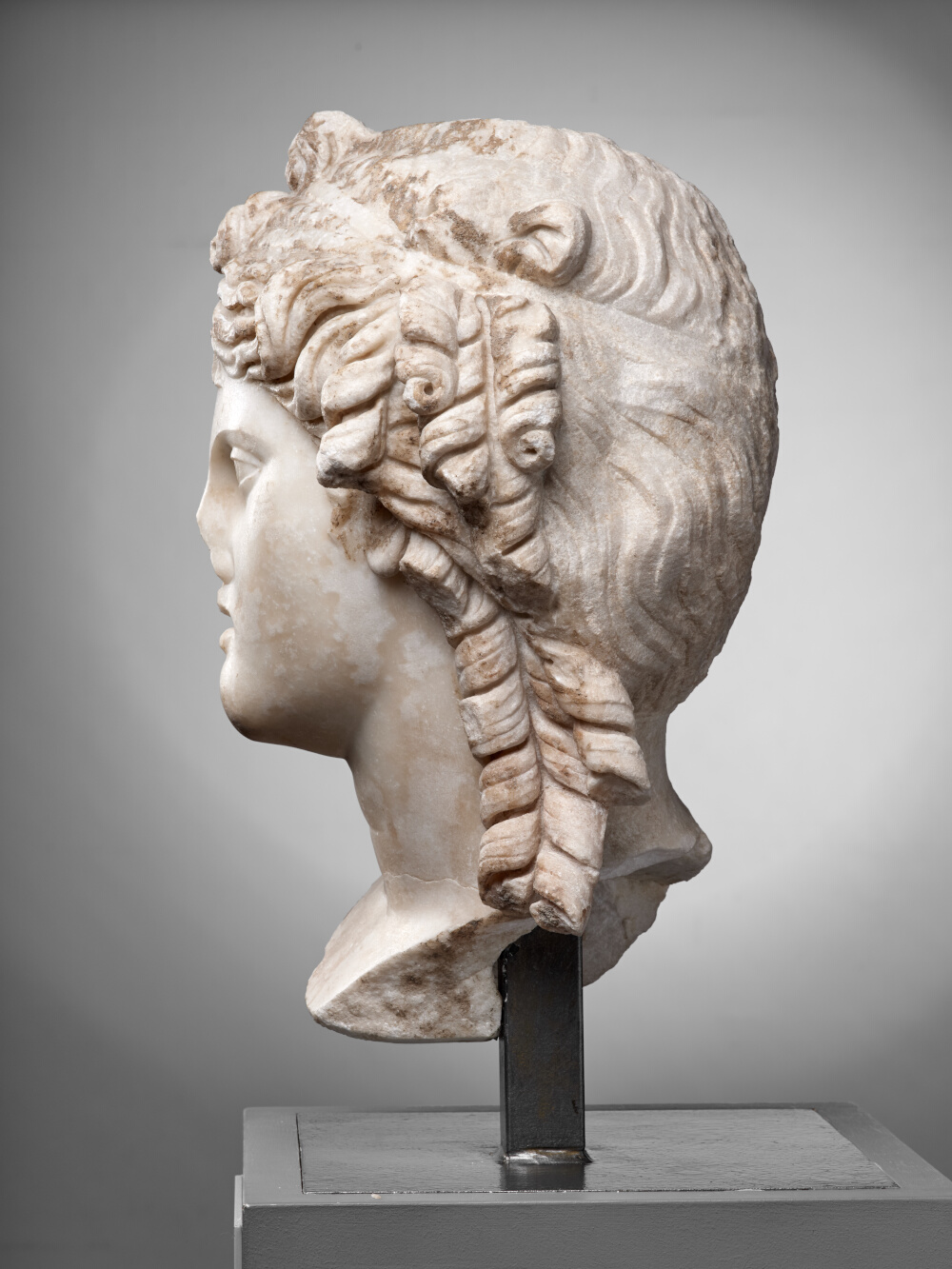
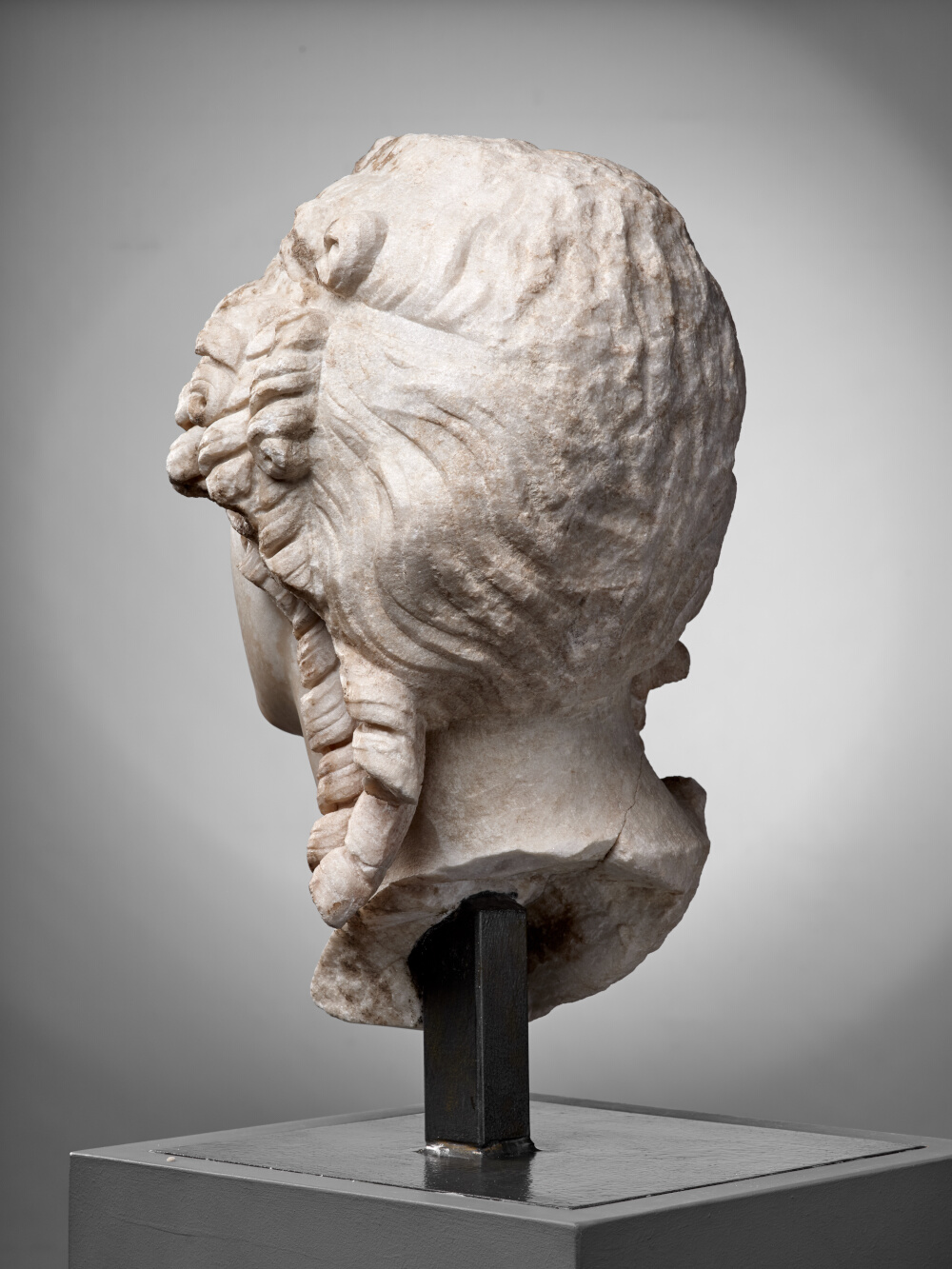
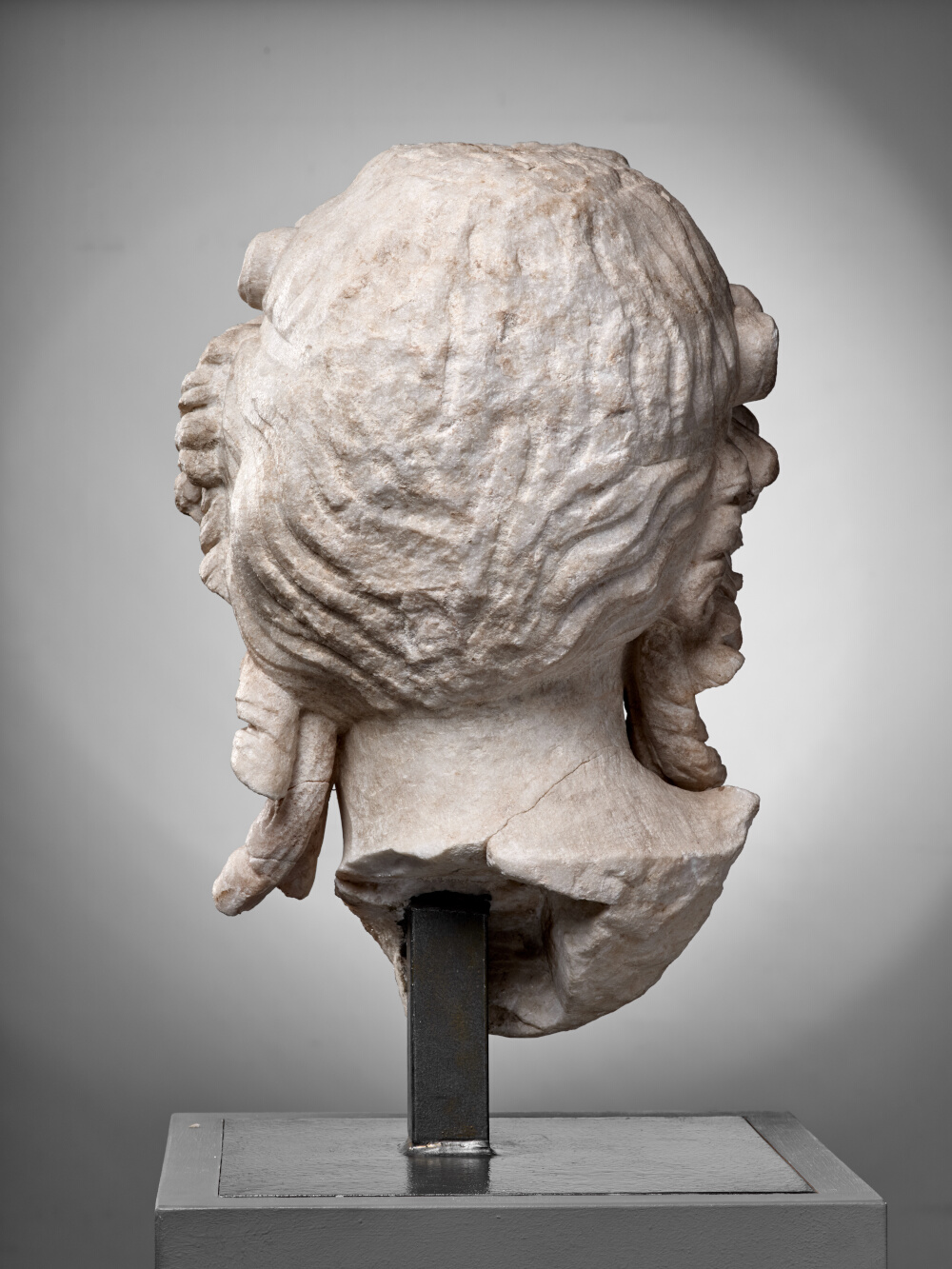
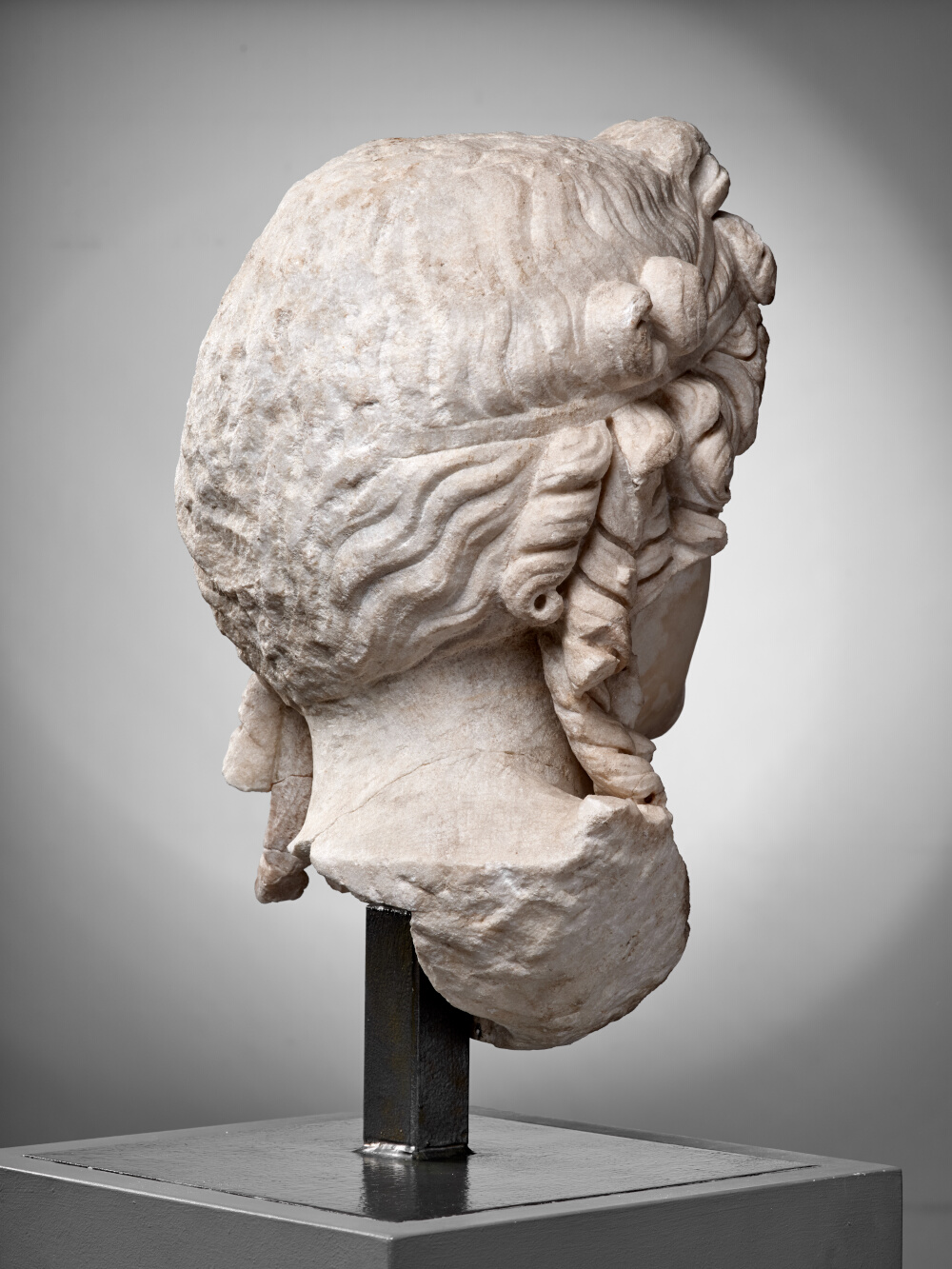
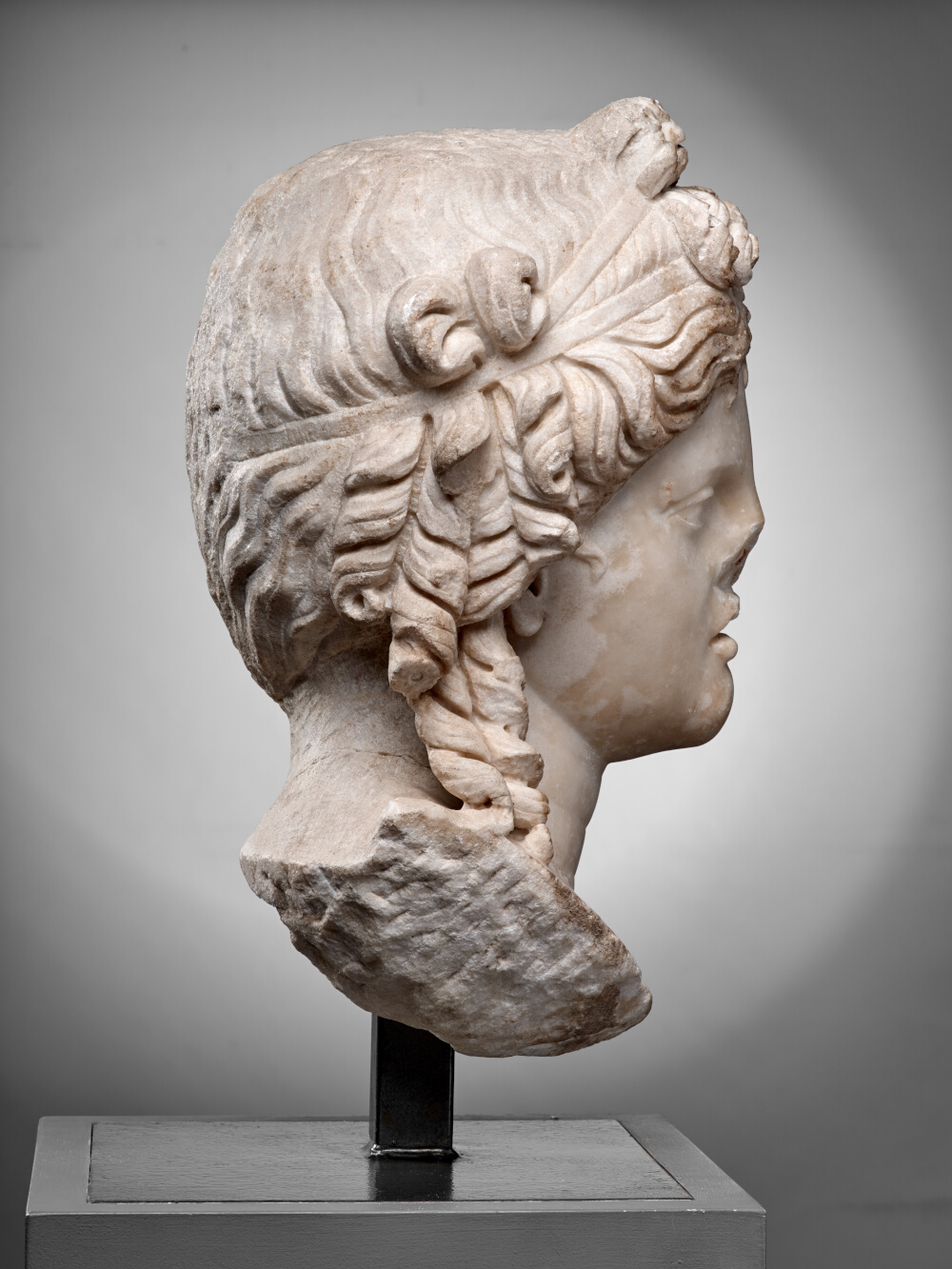
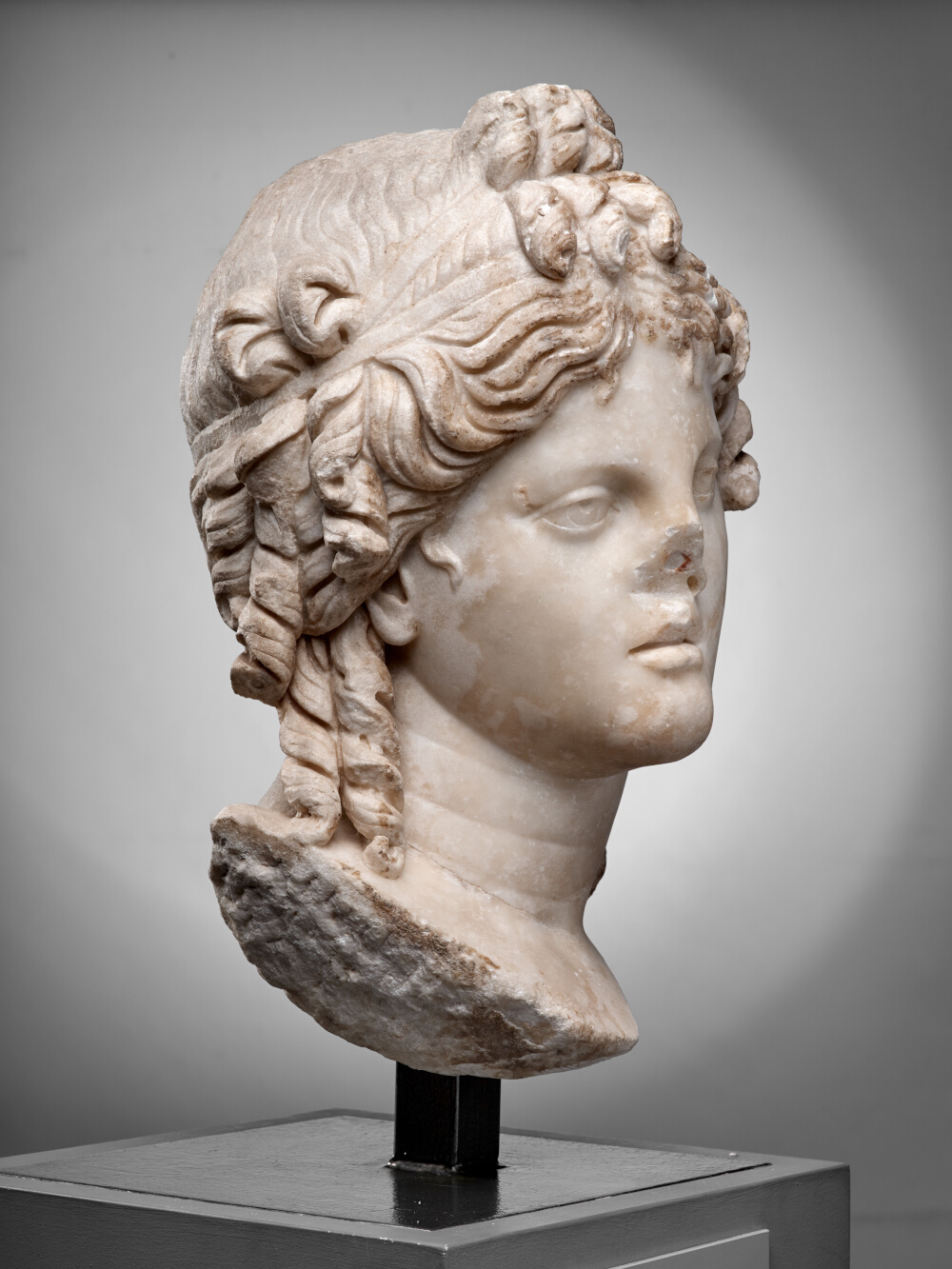
- Date de création
- 2nd- 3rd century
- Material
- Marble
- Dimensions
- H. 45 x l. 28 x P. 25 (cm)
- Inventory number
- Ra 54 bis
- Photo credits
- Daniel Martin
Was this lovely female head actually found in Chiragan? It was originally believed to represent Ariadne, the companion of Theseus and later Dionysos, or Isis. The representations of the Egyptian goddess show a very similar hairstyle, with characteristic ringlets falling down to her shoulders. Here, the braided strands are held back by a double ribbon positioned above the forehead and to the sides of the head. Maybe the three strands arranged on the top of her head, which were either left unfinished, or subsequently broken or reshaped, were used to support a crescent moon, horns, or a disc? In this case, we could safely assume that this is indeed the head of Isis.
D. Cazes
Bibliography
- Cazes et al. 1999 D. Cazes, E. Ugaglia, V. Geneviève, L. Mouysset, J.-C. Arramond, Q. Cazes, Le Musée Saint-Raymond : musée des Antiques de Toulouse, Toulouse-Paris. p. 100-101
- Espérandieu 1908 É. Espérandieu, Recueil général des bas-reliefs de la Gaule romaine, 2. Aquitaine, Paris. no 926
- Joulin 1901 L. Joulin, Les établissements gallo-romains de la plaine de Martres-Tolosane, Paris. no 180
- Massendari 2006 J. Massendari, La Haute-Garonne : hormis le Comminges et Toulouse 31/1 (Carte archéologique de la Gaule), Paris. p. 256, fig. 142
- Rachou 1912 H. Rachou, Catalogue des collections de sculpture et d’épigraphie du musée de Toulouse, Toulouse. no 54 bis
- Centro de Exposiciones Arte Canal 2007 Centro de Exposiciones Arte Canal, Roma S.P.Q.R : Senatus Populus Que Romanus. Exhibition Centro de Exposiciones Arte Canal, Madrid, 20 november 2007 - 2 march 2008, Madrid. p. 154, no 85
To cite this notice
Cazes D., "Head of a deity (Isis?)", in The sculptures of the roman villa of Chiragan, Toulouse, 2019, online <https://villachiragan.saintraymond.toulouse.fr/en/ark:/87276/a_ra_54_bis>.